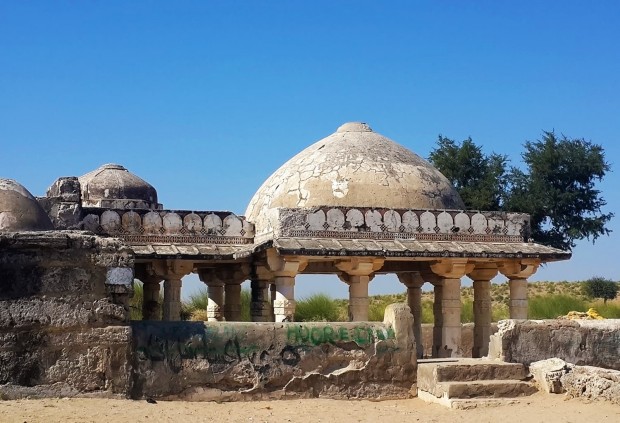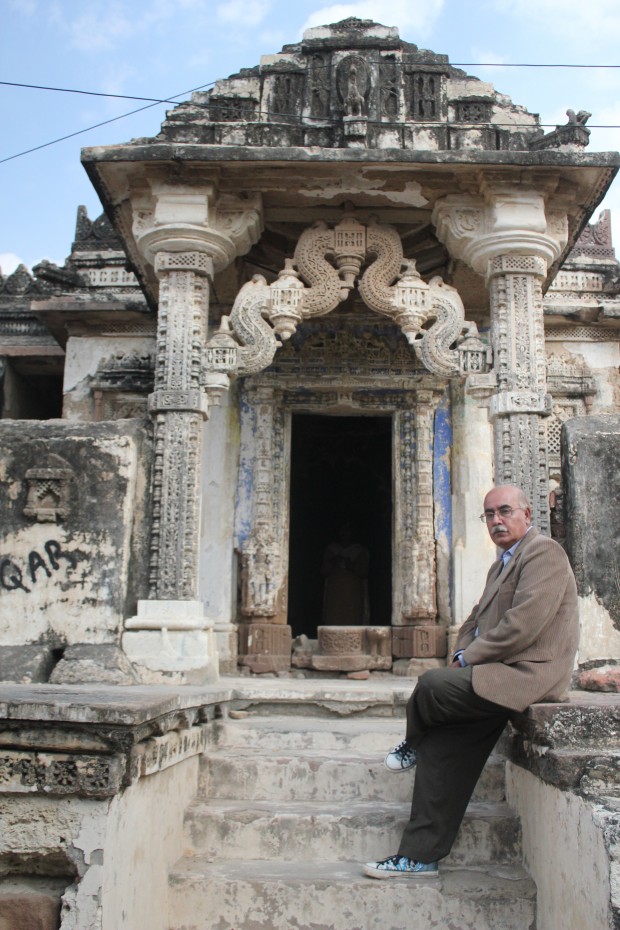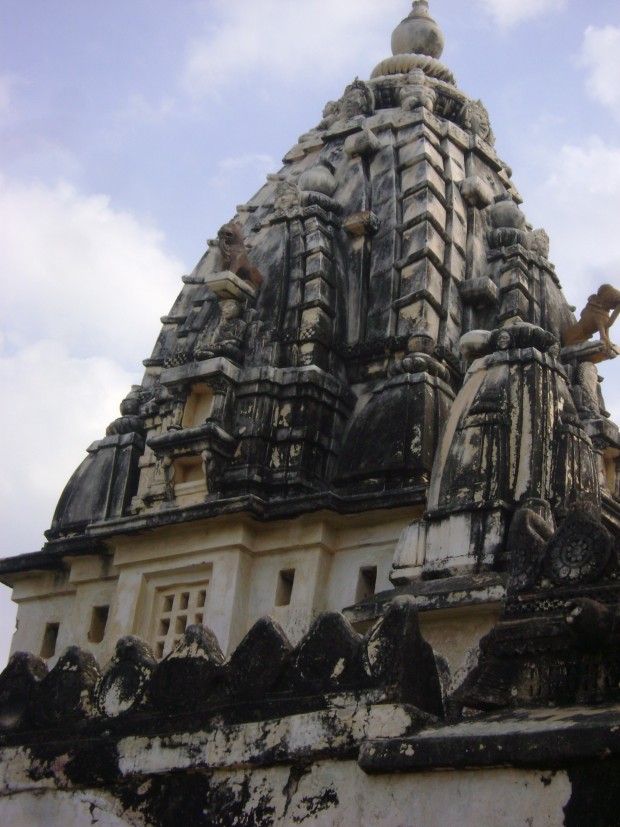Vanishing Jain Temples of Thar Desert
It was December 2010 when after a day-long drive and visiting various historical sites on the way from Karachi, the southern port city of Sindh province of Pakistan, me and my friends reached Islamkot, a tinny town located in the center of Thar, one of the largest deserts of world, bordering Indian State of Rajasthan. Next day we proceeded to Nagar Parkar, part of desert but with a very unique topography, as this area had not only a very fertile soil but a mountain, known as ‘Karonjhar’, spread over 16 miles and surrounded by Thar Desert on Pakistan side and Indian Desert ‘Runn of Kutchh’ on the southeastern side.
Apparently an isolated part of the region, Thar Desert, spread over 19638 sq km with a population of around 1.5 million, mostly non-Muslims, is known for its rich culture, religious harmony and arid lands that turn lush green when it rains. It’s also notorious for its famines and other natural disasters caused mainly by droughts, as the desert has a history of scarce rains. But even then the dwellers of Thar Desert, be it Muslim or non-Muslim, are very much attached to it despite all hardships and even if the famines compel them to migrate to other areas, they rush back to their homes built at sand dunes soon as rains begin.
Thar Desert had been abode of Buddhism and Jainism since thousands of years and has witnessed wars and rise and fall of several dynasties that ruled the region and thus has hundreds of stories in its fold. I had visited Thar Desert several times – during the droughts, famines, scorching summers and chilling winters but every time I felt as if there are many untold stories that await to be explored and unfolded.
This time we wanted to visit Jain temples. Like Buddhism, the Jainism had always attracted me lot for its philosophy. Jainism or traditionally known as Jain dharma, is an ancient Indian religion belonging to the Ramana tradition. The central tenet is non-violence and love towards all living beings. The motto of the Jainism is that ‘the function of souls is to help one another’. The three main principles of Jainism are ahimsa (non-violence), anekantavada (non-absolutism),
The word “Jain” derives from the Sanskrit word jina (conqueror). A human being who has conquered all inner passions like attachment, desire, anger, pride, greed, etc. is called Jina. Followers of the path practiced and preached by the jinas are known as Jains.
Jains trace their history through a succession of twenty-four teachers and revivers of the Jain path known as tirthankars.
In the current era, this started with Rishabhdev and concluded with Mahavir. Jains believe that Jainism is eternal and while it may be forgotten, it will be revived from time to time.
This tour was taking place after many years and we noticed lots of changes – wide roads were there in place of jeep-able tracks, mobile telephone and electricity facility could be seen everywhere right from Naukot, the gateway town of desert to Qasbo, the last village beyond ‘Karonjhar’ mountain near Indian border. And, another major change was security check-posts setup by Pakistan Army, where every vehicle is stopped and checked being the ‘sensitive’ area. The security personnel wanted to confiscate our cameras but later allowed us being the media persons and on assurance that the ancient Jain temples are our main focus.
Offering thanks to the security personnel for their kindness, we rushed directly to the 16th century Jain Gori temple located in Veera Wah area near Pakistan-India border. Unlike other sacred sites in Thar, the stunning white temple, darkened by the severity of climates and negligence of the country’s archeological department, has hardly any worshippers left in the country. Nearby is the village of Gori, but not many come to this way.
Local stories say the temple was built by a wealthy Hindu merchant and is dedicated to Lord Parshwanath, the 23rd Jain prophet. But with hardly any Jains left in the country, this major archaeological monument lies abandoned, neglected and shrouded in mystery.
Immediately, the sight is unlike any other holy site we had seen – reminiscent of Jain architecture, the temple is not a smooth circle like other domed sanctuaries.
Its walls instead are geometric steps of marble — a particular style that shows up everywhere from the temple’s steps, to the frames carved inside some of its walls. Stepping inside, we were greeted by semi-darkness. We were surrounded by intricate art and fresco work on every marble wall, pillar and ceiling. The carvings shape their way up to a grand dome — a majestic sight even in little light. The ancient dome is covered with innumerable tiny bats clinging on to the ceiling.
The frescoes adorning the temple’s domes are a series of arches, and flat blocked patterns depicting kings and princesses in their royal attire.
The paintings’ colours and vibrancy suggests they are in their original state, possibly making them some of the oldest surviving frescoes in Pakistan that haven’t been ‘stolen’.
Some parts of the temple do visibly lie in ruin: walls destroyed by an earthquake, and sections broken down by the British at some point during their occupation. None of these sections have been repaired.
There were smaller rooms attached to the central dome, all without light. Aside from one picture — showing a god and a goddess — we find inside one of the cramped rooms, there is no idol, trinket or statue depicting the deity for which the temple was made.
We could explore around and dig deeper, but another look at the dark ceiling full of bats, we were ready to leave the temple in seconds. Besides, the Gori temple was not the only wonder the area offers. We had to move further to Nagarparkar town where some other Jain temples exist.
Further down the road, on the foot of the Karonjhar Hills — also called granite hills — lies another domed marble structure, similar to the Jain temple. But this is a holy site for Muslims, not Jains: the Bhodesar Mosque of the era when the Mughal invaders ruled the area.
After climbing and crawling through some shrubs behind the mosque, we reached the Bhodesar Dam’s reservoir — a welcome sight of serene blue water, which accumulated there when streams run down from Karonjhar Hills during rains. The earthen Dam was built by the provincial government about thirty years back.
A walk along this reservoir takes us towards a second, smaller Jain temple. Apparently, this second temple once held an idol inside which has long gone missing. There are no boundaries and no caretakers. Hardly any locals seem to visit the place either.
Our destination was Nagarparkar town located at the foothill and had a Jain temple in the mid of the town. It was a unique structure with vertical dome and marble steps to enter into it. Here again there were carvings on the walls inside but no any idol. It seemed that the authorities of archeological department had not taken any measure for the preservation of this unique temple like other archeological sites. These sites stand totally neglected and one can observe the decaying process of historic structures. Some day in future these temples might vanish like several others.
We were told to stop by some other spots in the area, including another ancient Hindu Temple, located at the Karonjhar Hills, which however was not accessible by vehicles, and had to walk for two kilometers leaving vehicles at certain altitude. This temple was maintained by Hindu community being the sacred place for annual pilgrimage, but time restraints did not allow us to explore further, and we had to return. But every visit to Thar’s relics precedes another: I know I will visit again soon.


























































